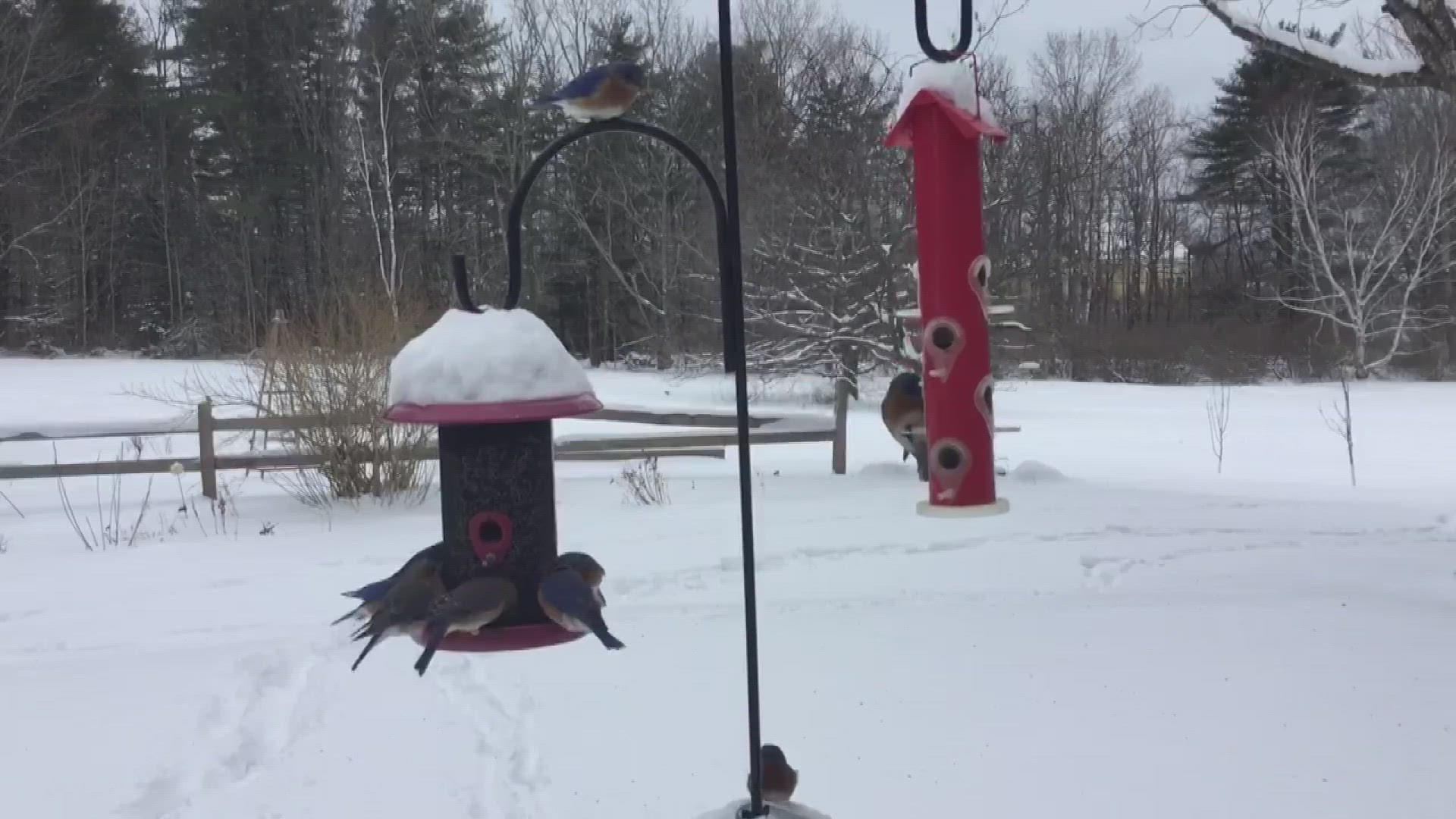FREEPORT, Maine — Derek and Jeannette Lovitch are passionate about birds.
It's why the two trained biologists started their Wild Bird Supply store in Freeport 18 years ago, and why scores of bird watchers come to them for knowledge and advice.
Those numbers, they said, have been steadily growing.
"The last couple years with the pandemic and people at home, looking for ways to connect with nature but also something to do, we’ve seen a significant growth in backyard nature and backyard bird feeding," Derek said.
Winter and early spring are prime months to see birds close-up at feeders. Lovitch said the feeders at their own house are typically seeing 16 to 18 different bird species, while nearly as many flock to the feeders outside the store.
Not surprisingly, they said feeding birds regularly helps them, and does not make the birds dependent on those supplements for survival.
"I think bird feeding is great throughout the year," he said. "Species change. Supplemental food is always helpful, proven not to create dependency. So feeding birds throughout the year is great."
At Maine Audubon, bird specialist Andy Kapinos said despite how much seed birds may consume at feeders, it is not their primary nutrition source.
"Birds mostly rely on insects, even during feeder season," he said.
Kapinos added that despite winter snow and cold, the insets can still be found.
"Yes, woodpeckers just drill in and get insects that way, and the longer trees aren’t frozen solid the longer they can get insects. And even days like today, where it's cold but a little warmer, the honeybees are active today and there are flies around."
But both bird experts said the changing climate, with warmer winters, is having a profound effect on bird species in Maine.
Birds that live part of the year in northern Maine or Canada, such as boreal chickadees and Canada jays, are now very rarely seen in much of Maine. At the same time, bird species that have traditionally gone south for the winter are now commonly seen in winter.
Those include some of the most popular and colorful feeder birds: cardinals and bluebirds.
"Cardinals were not a bird for Maine 100 years ago," Derek said. "Now they're becoming common. I have 15 at my feeders in Durham."
Bright red cardinals may be the most prized backyard feeder species for many people, but the bluebird is becoming a close second.
Derek said at one time, bluebirds were not considered a winter species in Maine.
"That bird used to leave Maine in winter. I actually brought my oldest field guide from 1987, and the bluebird isn’t even shown in winter north of New York. Now we find bluebirds in the southern half, almost two-thirds of Maine, and in the Bangor area we see bluebirds in winter now," he said. "And this is all new because the Christmas bird count wasn’t finding them outside of York County in the early 90s."
Warmer winters, they said, help some bird species and hurt others. Andy Kapinos said the cycle of food and habitat is changing with the climate, and that is forcing bird species to adapt or relocate.
"Populations of bird species are tied to populations of insects, which are tied to native plants. And plants are very affected by changing climate because they can’t get up and move someplace else," he said. "So as [the] climate changes, a lot of those species will become less adapted to the climate they’re in, and that will drive really significant habitat changes, which is the leading cause of changes in bird populations."

